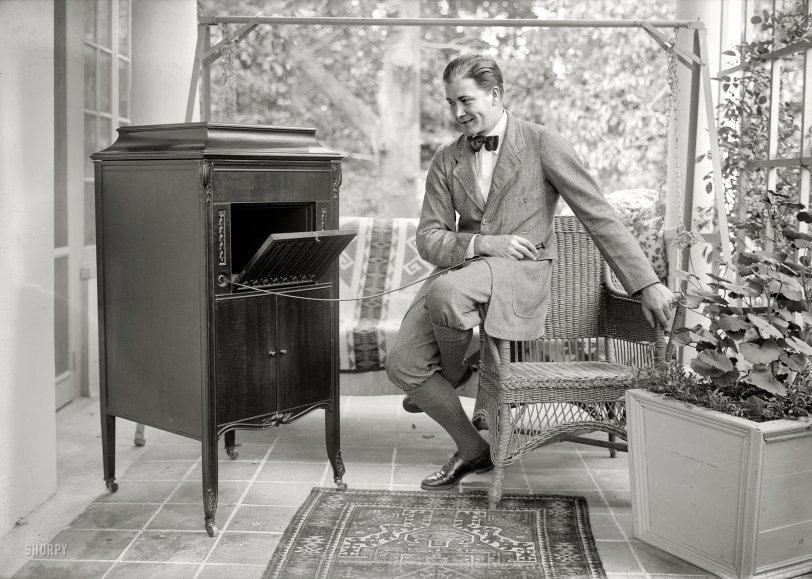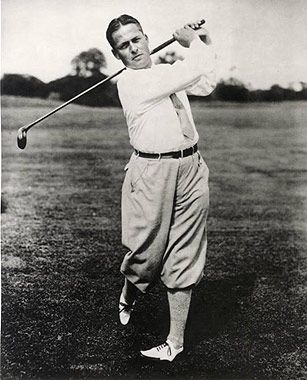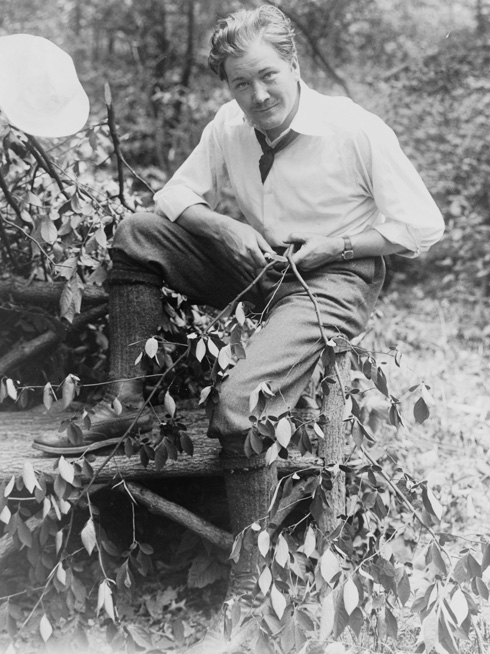


Framed or unframed, desk size to sofa size, printed by us in Arizona and Alabama since 2007. Explore now.
Shorpy is funded by you. Patreon contributors get an ad-free experience.
Learn more.

- Illuminate us
- I remember it well
- I can't prove it
- Complicated then, forgotten now
- Bryan-Stevenson
- Skinny is as skinny does
- How do you rest in peace
- Riding the footboards
- Alas, hidden from view
- Baldwin Diesels
- Exclusive pump
- Bananas, Oysters and Smokey Joe
- Details, Details
- What's that building to the left of the tower?
- Coal Barges
- Bromo-Seltzer
- Inner harbor
- The Basin
- What a headache!
- Giant stepladder?
- Yeah, it was cold
- Love those coats
- Link & Pin Days Remnant
- Baldwin 62303
- Baldwin VO-1000
- Cold
- No expense spared
- Tough Guys
- What's your hurry, where's your hat?
- Sheriff's Signature
Print Emporium
iTunes: 1920

Update: tterrace reveals this to be the noted baritone John Charles Thomas.
New York or vicinity circa 1920. There are around a dozen pictures in the Bain archive of this fellow, all labeled "Thomas" -- perhaps a composer, songwriter or singer. 5x7 glass negative, George Grantham Bain Collection. View full size.
Knickerbockers
Knickerbockers like these were common in the UK and US for casual wear, especially in a rural setting. Tucking the end of the breeches into the socks kept the bottoms out go the mud, brambles, etc when taking a stroll in the country.
Golf knickerbockers (called 'plus fours' where I grew up) were a little longer and baggier below the knee. So called because they extended 4 inches below the knee. Not being a golfer I don't know why the extra length was useful, but the basic purpose of keeping the trouser bottoms out of the wet grass was still the same.
Where I live now (Switzerland) one still sees a few of the elder generation dressed in similar breeches for their Sunday walks along the 'Wanderweg'.
Hair Apparent
Or in this case Heir Apparent. If this were 40 years later he could have been one of Lloyd Bridges' sons.
Let's Twist Again.
For a moment there I thought he had a Chubby Checker record on.
I knew you could do it
Well done everyone, now where is that tape measure and Miter Master, I only have 14 more pieces to cut!
The affect of music.
I have the same look on my face when I listen to my old Beatles records.
Thought bubble
"Ahh, nothing can ever replace the rich, warm tones of acoustical amplification, certainly not those tubes the kids today use, they're so harsh sounding."
JCT
To his friends he was affectionately known as Jack Chuck Tom for short.
John Charles Thomas
The singer was once incorrectly identified on a country music station in Texas. The announcer said: "Now here's an interesting looking record--it's got a classical label, sung by a trio, John, Charles and Thomas." It was included on a popular 1950s record called "Pardon My Blooper," by Kermit Schafer.
Golf Knickers
Regarding landtuna's comment about the nifty "slacks", these are known as Golf Knickers, a virtually indespensible and fashionable item of clothing worn by the country club set in the Roaring 20's. With the onset of the Great Depression, these went out of style practically overnight along with other acouterments of the Jazz Age such as knee-length, flat-chested dresses and cloche hats. Here's golfing immortal Bobby Jones appropriately dressed in the mid-1920's.

Stocking-stuffer
I wonder what the significance is of his trousers being tucked into his stockings, in both pictures. I can't remember seeing too many pictures from the 1920s with them worn like that, except in golfing attire.
I rather like the singer with his hair loose and natural!
John Charles Thomas
It's renowned American operatic, concert and recording superstar John Charles Thomas (1891-1960), seen here in a shot similar to others in the Bain Collection. He recorded for Vocalion around this time.
[A noted baritone, he was also a crackerjack bench-whittler. Thanks tterrace! -Dave]

Looks Uncomfortable
It appears that you have to be in the crouch-sitting position in order to hear the music most effectively!
Harry Lauder
Thomas might well be amused by one of Scotsman Harry Lauder's records. Lauder was a popular artist circa 1920, well known for his comical recordings.
Nom de Croon
Like "Prince" or "Madonna," Thomas needed only one name.
Nice comfortable pose, by the way.
For your listening enjoyment
This gent---not sure who Thomas is/was---is using the Graduola device on the Aeolian-Vocalion phonograph. This was Aeolian's highly touted means of varying the sound output from a record, i.e. a volume control. The knob attached to a wire inside the cable, and by pulling or pushing on the knob it would act on a damper under the tonearm to stifle the sound by varying degrees. When not in use, the knob and cable resided in the cabinet (see that hole just to the left of the speaker grille). This device didn't take the buying public by a storm, but to be fair it was being offered at a time when the American marketplace was being bombarded by phonographs from a great number of suppliers. Aeolian had been a piano and organ builder of notable repute for some time, so such a phonograph was its effort to gain a place in the market. This is the first time I have seen the use of the grille in the part-open position, and the benefit is hard to determine.
Smokeless Hookah
"Thomas was just beginning to get the giggles after demonstrating his new smokless hookah."
The little things
I know in the next few comments we are going to learn the make and model of that lovely Victrola, and whether the thing he is holding is a "remote" or a microphone or a "mute" control. We will learn what fabrics his suit is made from, and funny comments will be made about his tie and, God forbid, his hairstyle. He will be compared to a young Edward G. Robinson, or a young George Reeves, both the carpet and blanket will be described with their present value on eBay listed -- but I've gotta tell you, I'm still figuring out the amount of work and measurement required to get that moulding cut and affixed to the planter.
























On Shorpy:
Today’s Top 5